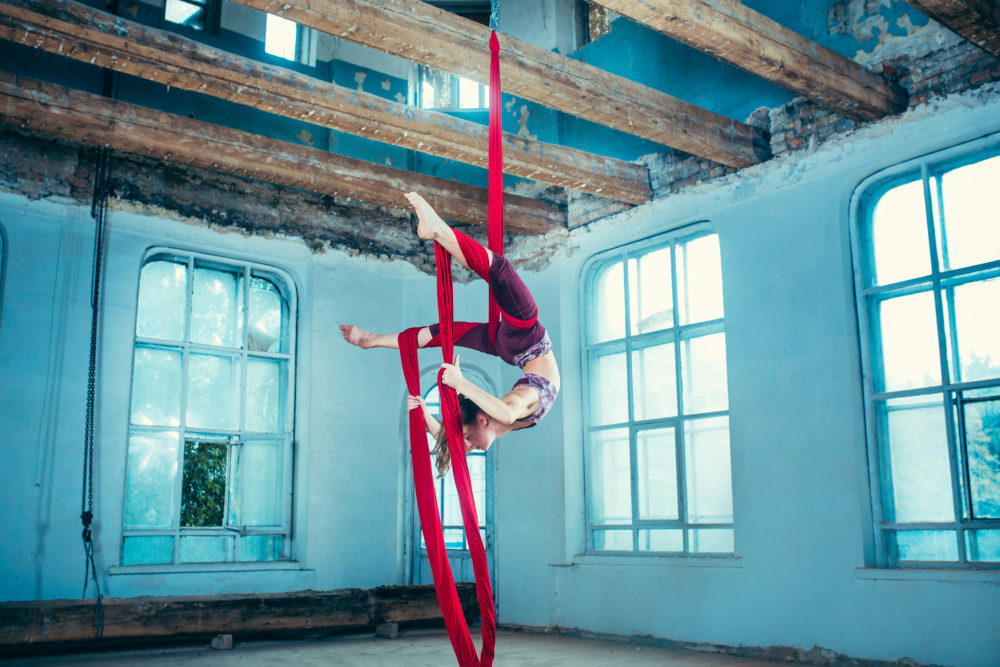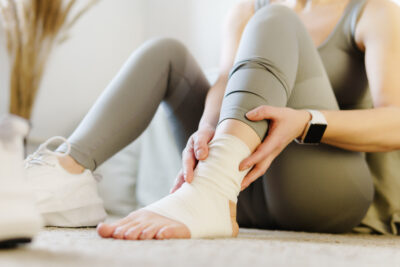Overuse Injuries in the Performing Arts

Doing the same dance step movement over and over again, the kind of repetitive practice that’s required to improve technique and perfect the dance, can put a strain on muscles and connective tissue. An internal process called remodeling is the breakdown and buildup of tissue. If breakdown occurs more rapidly than build-up, an overuse injury occurs.
Dancers must have the mentality of both an athlete and an artist. Classes, exercises, rehearsals, and performances are all part of their regular routine. The best way to keep dancers dancing is by preventing injuries before they happen. Morgan, an aerial artist and DOC PT guest, explains her philosophy for staying healthy: “I am upside down, swinging, spinning, using my grip strength as an aerial circus artist. I warm up and stretch to get my muscles ready for twists, leaps and body rotations. I listen to my body and take a break or a rest day to recover.”
If training stress is too high and recovery time is too low, overtraining may result in overuse injuries, typically affecting the ankle, foot, lumbar, and cervical spine. Jacquelyn Nelson, a certified athletic trainer and co-founder of the adolescent dance medicine program at Children’s Healthcare of Atlanta, outlines the three main factors that may lead to overuse injuries:
- Intrinsic: hypermobility or inflexibility, muscle weakness, general health, prior injuries, and any dominance of one side over the other
- Environmental: footwear, dance floor, costume distractions
- Situational: male lift moves, younger dancers’ underdeveloped muscles. pointework with all body weight on the tips of fully extended feet, or requirements of specific dances1
Tips for preventing overuse injuries include:
- Cross-train with yoga or Pilates to maintain a strong, healthy body.
- Include core and muscle training for endurance.
- Strive for proper alignment and good posture.
- Don’t train more than 20 hours a week.
- Warm up and cool down before and after practice and performances.
- Eliminate other high-risk behaviors like smoking or avoiding protein.
- Get enough sleep to recover from mental and physical stresses.
- Eat a nutritious diet, including micronutrients: iron, calcium and vitamin D.
- Pay attention to warning signs such as discomfort and pain.
Dancers need to seek dietary advice from qualified nutrition specialists. The DOC sports medicine team of orthopedic surgeons, specialty-trained PAs, pain management physicians, and physical therapists are available seven days a week to review a dance training program, evaluate factors that may predispose a dancer to an injury, diagnose and provide a treatment program to keep dancers dancing.




